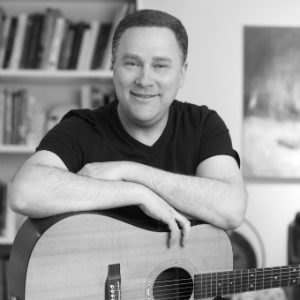Creative Arts: A Pathway to Inclusion
Guest Blog by Rob Levit, Licensed Consultant, Standards for Excellence® Institute, www.creativityexpert.com
 Art,
Art,
music,
and creative writing are too often overlooked as vehicles for increasing community outreach, stakeholder involvement, and new avenues of communication throughout the nonprofit enterprise. That’s a shame because individuals and cultures leave their mark on the world through creativity, making tapping into it not only powerful but relatively easy.
Case in point – In 2007, I had the opportunity to work with Arundel Lodge, a nonprofit dedicated to providing healthcare, housing, employment, and life skills activities for adults with mental illness. When I first visited the day program, I noticed that the adults were using coloring books and doing beading but were not engaged in a lot of activities that harnessed their innate creativity. As I worked with staff and adults there, we introduced music and creative writing, a project culminating in a book and musical CD called Success Stories. The poignant and compelling artwork, creative writing, and musical selections revealed to participants, staff, family members, and myself that – given the opportunity – human are capable of more creative work, reflection, and growth than we give them credit. Participants wrote a song called “Monday Morning Blues” that shared their concern about and sickness at the amount of medication they had to take. That’s critical for the clients to share and important for the staff and family members to know! We can learn things that we did not know through creative expression. As an educator and creative artist, my work with Arundel Lodge was a watershed experience for me. I realized that with just a small shift in focus and activities, people can come out of their shells, try new things, and teach others. It was the art, the music and the creative writing that served to create an inclusive community.
Here’s another example. After the devastating Indian Ocean tsunami, World Vision’s Sri Lanka Tsunami Response Team –rather than swooping in and telling the population how to rebuild their community — engaged in a creative community feedback process of creating pictorial art cards. It seems so obvious, yet how many times do we impose programs on vulnerable populations – children and adults – without asking them, “What do you need? What are your hopes and aspirations?” For some these questions can be too direct, so allowing people to express themselves in a different and safe way is critical. That’s what inclusion is about – suspending your agenda and setting the occasion for others to be heard in their own voices.
Recently, I worked with a group of productive, goal-oriented, low-income youth in a summer jobs program. At the end of the day, we formed a circle and each student had the chance to speak about their feelings – not opinions – on the recent violent conflicts involving the police. By creating a safe atmosphere where all feelings were valid and there was no discussion of opinion, a sense of healing pervaded the room. Through simple words, all were included, all were heard.
The modality hardly matters. When we allow others to express themselves, as individuals and as a group, we empower them. It’s a celebration where we are no longer leading people, we are leading – and learning from – each other.
Want to talk more about arts and inclusion? Join my session, “Creative Arts: A Pathway to Inclusion,” at Maryland Nonprofits’ Annual Conference on September 29,
2016
in Baltimore. Register Here >>
